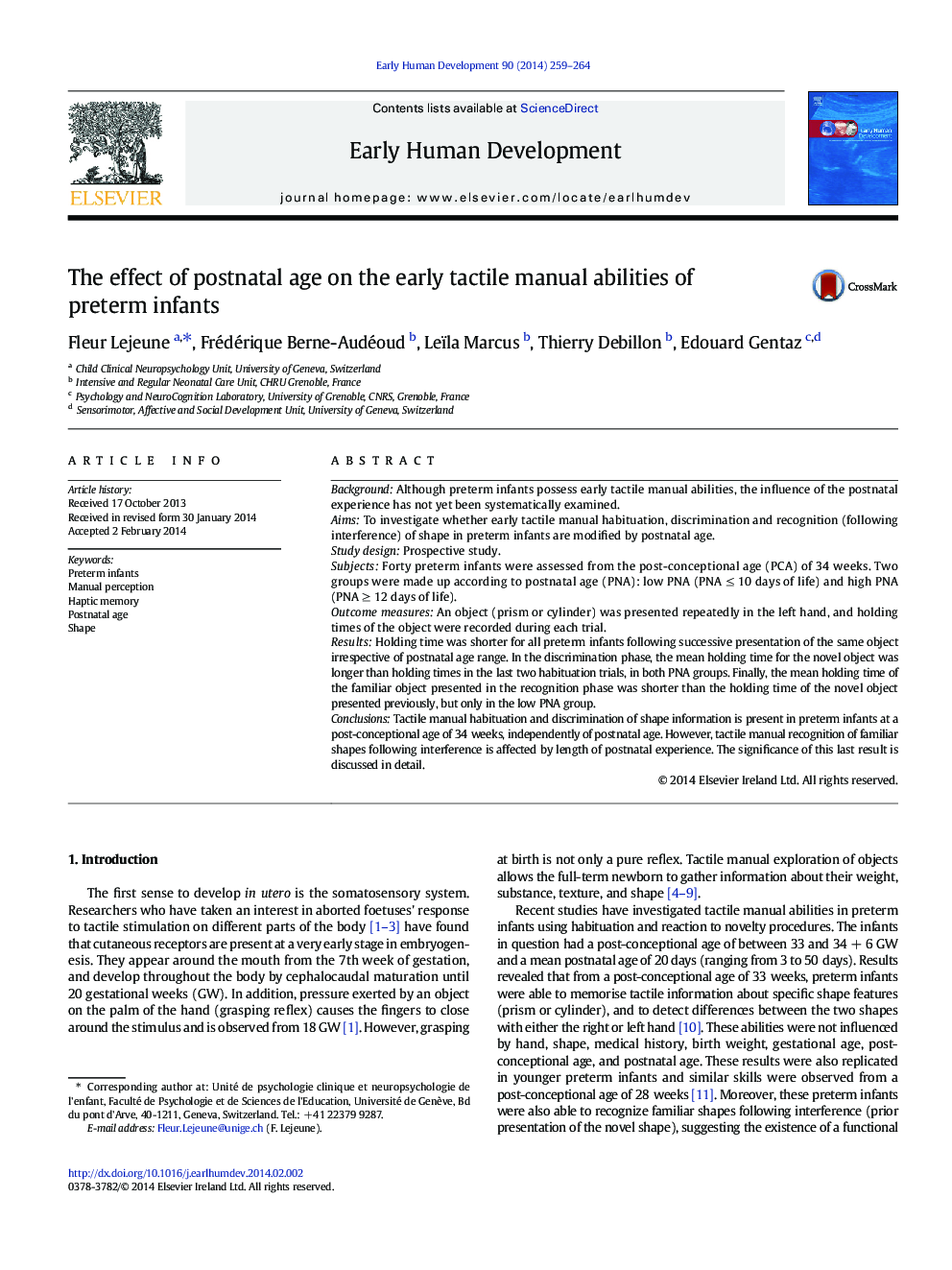| Article ID | Journal | Published Year | Pages | File Type |
|---|---|---|---|---|
| 6172255 | Early Human Development | 2014 | 6 Pages |
BackgroundAlthough preterm infants possess early tactile manual abilities, the influence of the postnatal experience has not yet been systematically examined.AimsTo investigate whether early tactile manual habituation, discrimination and recognition (following interference) of shape in preterm infants are modified by postnatal age.Study designProspective study.SubjectsForty preterm infants were assessed from the post-conceptional age (PCA) of 34 weeks. Two groups were made up according to postnatal age (PNA): low PNA (PNA â¤Â 10 days of life) and high PNA (PNA â¥Â 12 days of life).Outcome measuresAn object (prism or cylinder) was presented repeatedly in the left hand, and holding times of the object were recorded during each trial.ResultsHolding time was shorter for all preterm infants following successive presentation of the same object irrespective of postnatal age range. In the discrimination phase, the mean holding time for the novel object was longer than holding times in the last two habituation trials, in both PNA groups. Finally, the mean holding time of the familiar object presented in the recognition phase was shorter than the holding time of the novel object presented previously, but only in the low PNA group.ConclusionsTactile manual habituation and discrimination of shape information is present in preterm infants at a post-conceptional age of 34 weeks, independently of postnatal age. However, tactile manual recognition of familiar shapes following interference is affected by length of postnatal experience. The significance of this last result is discussed in detail.
